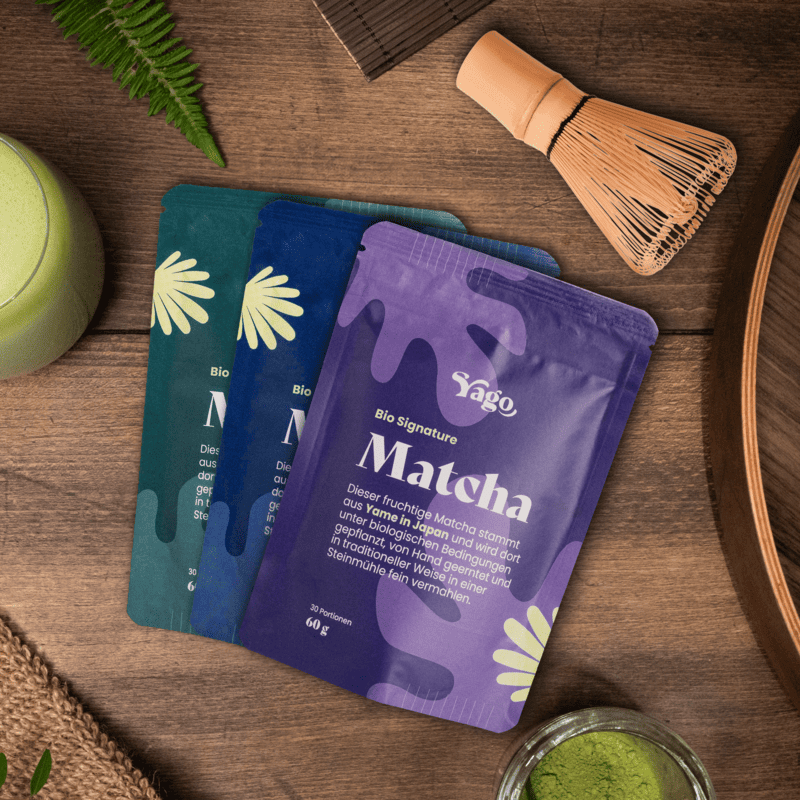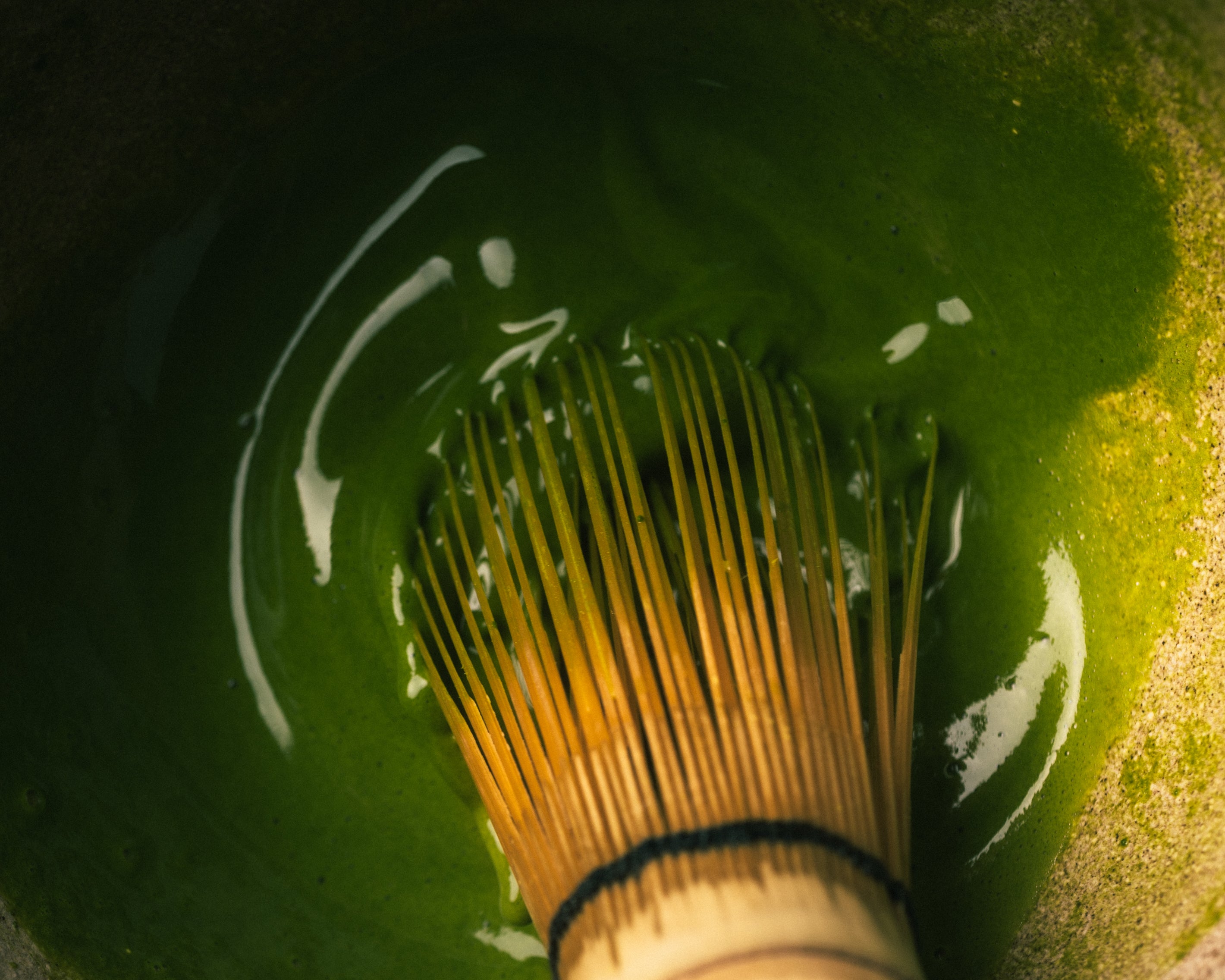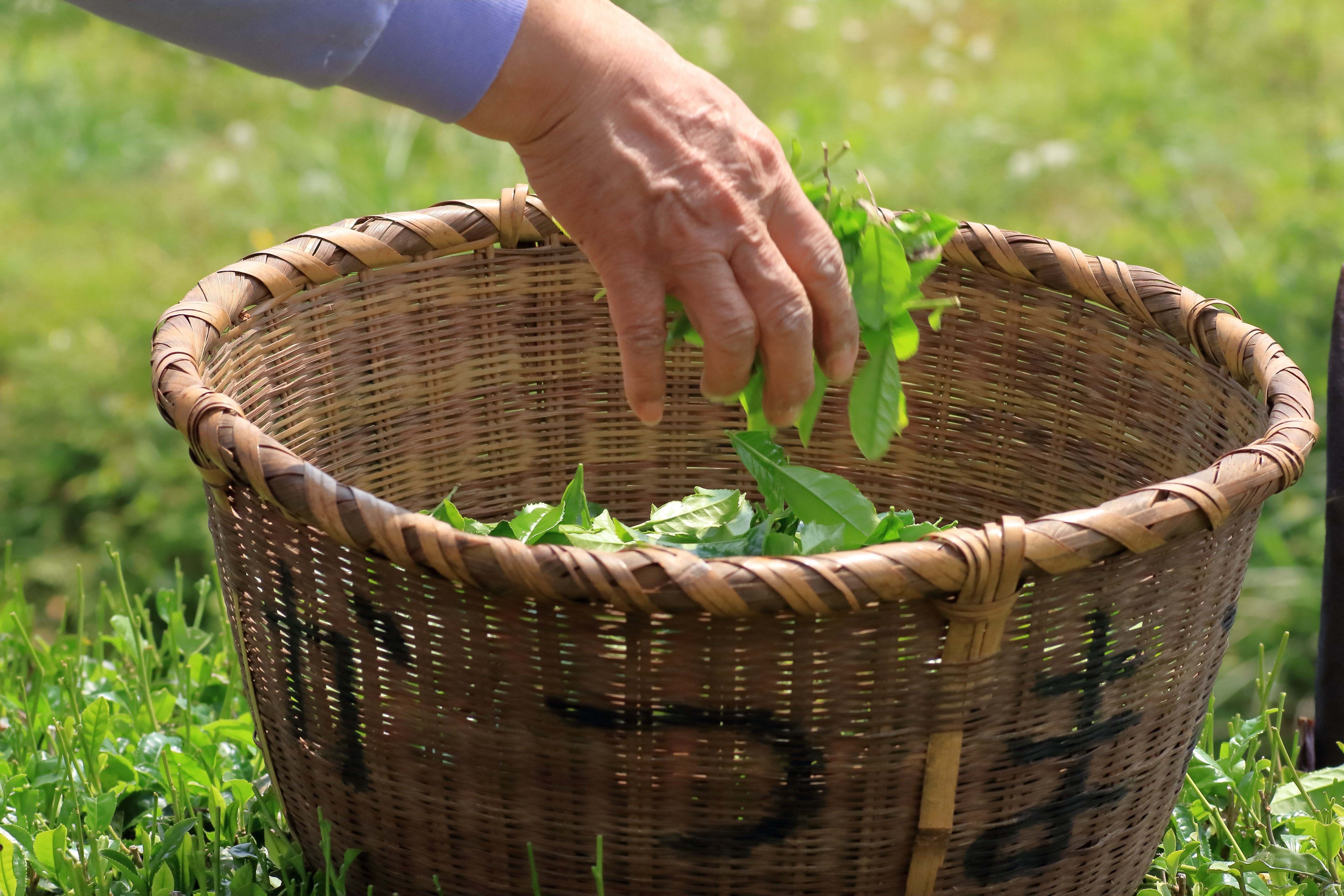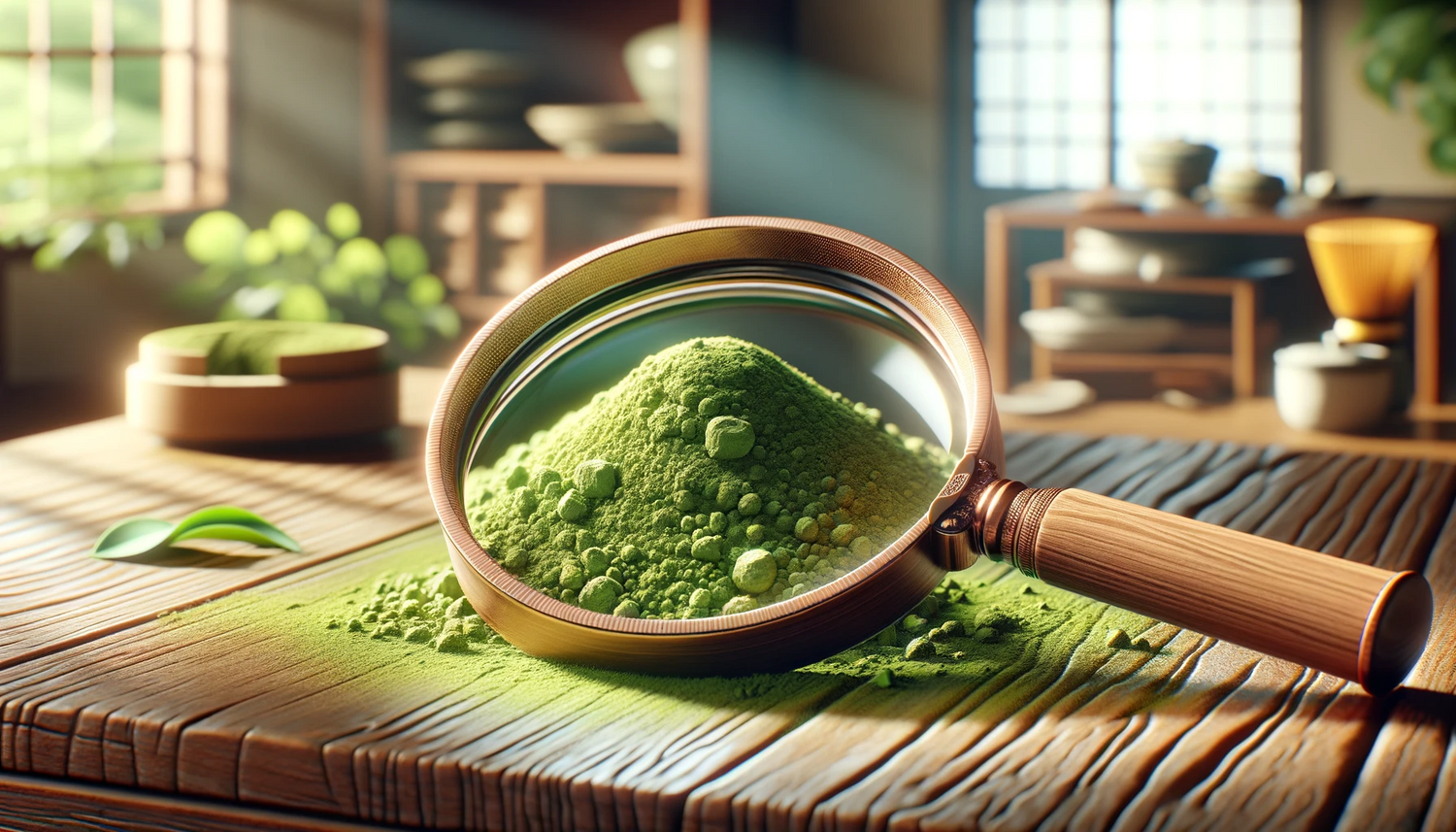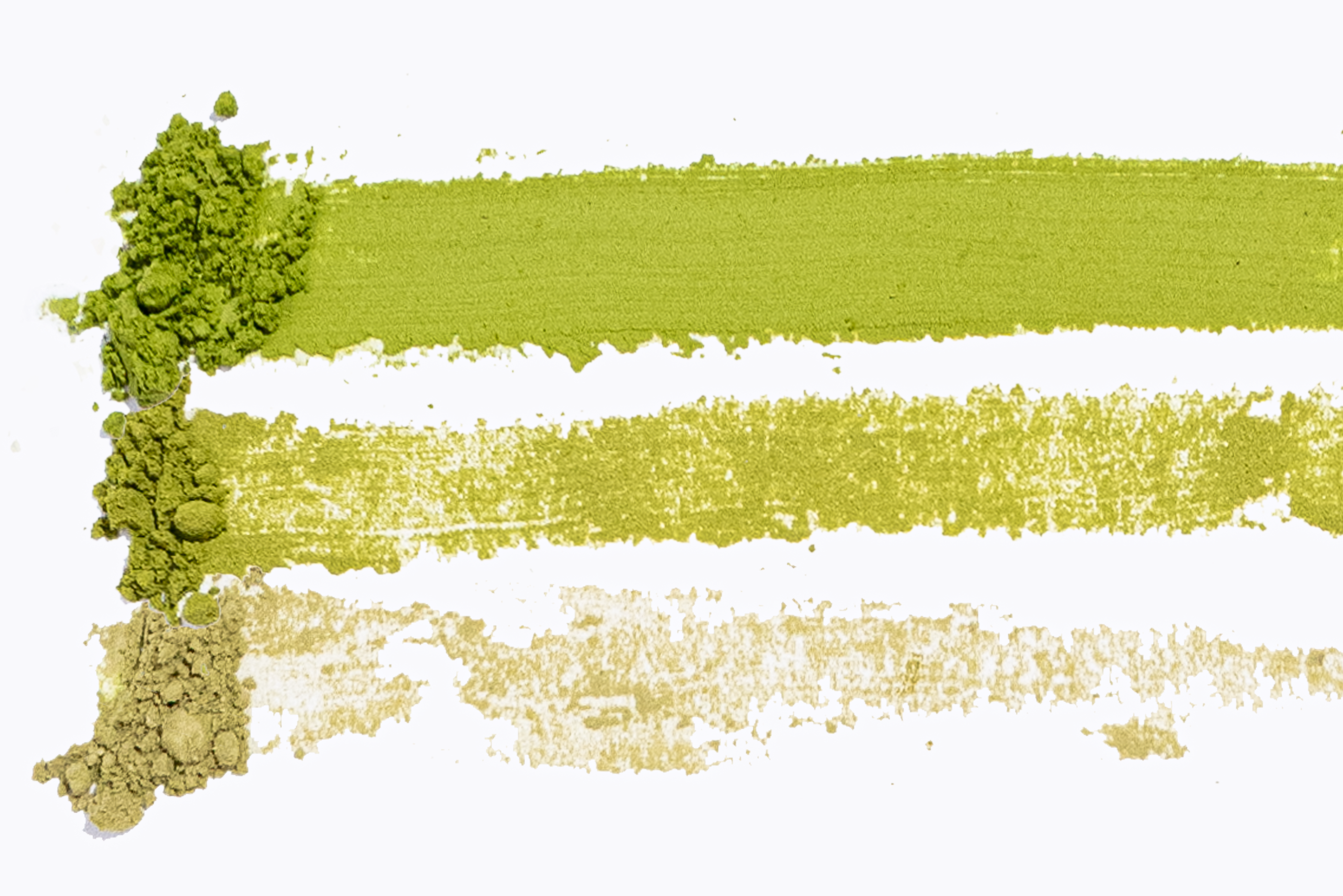Matcha is generally divided into three quality levels: Culinary, Premium, and the best Matcha quality, the Ceremonial Grade. However, this article does not focus on assigning Matcha to a specific grade, but rather on how to generally and objectively recognize high-quality Matcha, such as Organic Ceremonial Matcha.
The secret of the luminous color
A decisive quality feature of high-quality Matcha is its color. The ideal Matcha shines in a vibrant, rich green that almost appears luminous. This intense coloring is a sign that the Matcha was grown under optimal conditions. The tea leaves are shaded before harvest, which increases chlorophyll production and thus leads to this unique green color.
A too pale or even yellowish green can indicate inferior quality, possibly due to poor storage or aging of the product. A high-quality Matcha retains its radiant color even after brewing and does not turn brownish.

Fineness of the Powder
High-quality Matcha is ground extremely finely. This fineness often causes the tiny particles to attract each other electrostatically, forming small clumps. For preparation, it is therefore important to sift the powder first and stir it well with a bamboo whisk. But beware, moisture can also cause clumps. The fineness is best checked by hand, by spreading the powder.
It looks roughly like this (Ceremonial Grade):
This is what a Premium Grade looks like:
And a Culinary Grade:
Fresh Scent
A high-quality Matcha smells fresh and, depending on type and origin, can be herbaceous, nutty to slightly sweet, or fruity. A stale, musty, or bitter smell indicates poorer quality.
Rich Flavor
The taste depends on many factors, such as the preparation method, and can of course be very subjective. Overall, however, one can say that a good Matcha offers a rich umami experience, paired with a light, natural sweetness and only a hint of bitterness. The texture is creamy and smooth. This combination gives it a complex and balanced flavor that is both deep and refreshing.
Japanese Origin
Truly high-quality Matcha comes from Japan. Especially in regions like Kyoto, Kagoshima, Fukuoka, or Shizuoka, Matcha is cultivated and processed using traditional methods. Here, in the home of Matcha, the tea leaves benefit from ideal climate and fertile soil. Every detail counts: from the fine grinding in stone mills to the role of Matcha in the Japanese tea ceremony. This dedication ensures that Matcha from Japan is loved worldwide for its incomparable taste.
Price of Quality
Good Matcha has its price. Cheap products can be an indication of inferior quality. For 60 g of Organic Ceremonial Matcha under 30 CHF, you should probably stay away.
Do you need the highest quality Matcha? No, of course not. But if you've never tried real, high-quality Matcha, you should give it a try. The quality differences might really surprise you.
Our: Organic Ceremonial Matcha from Yame (Fukuoka).